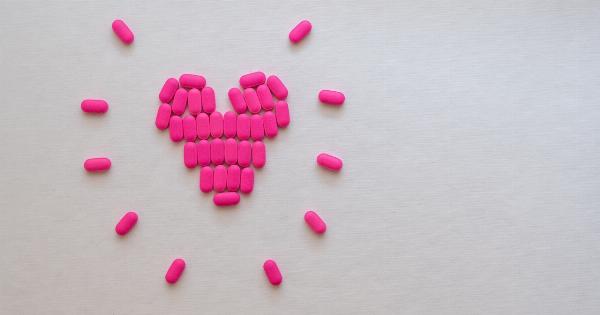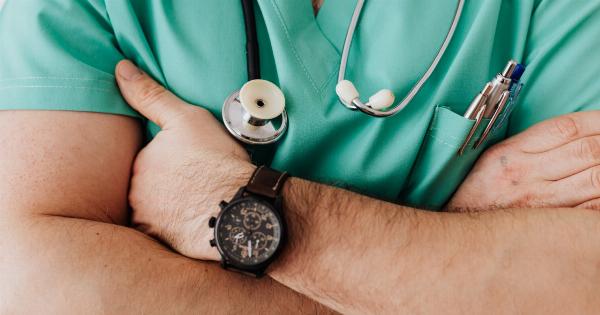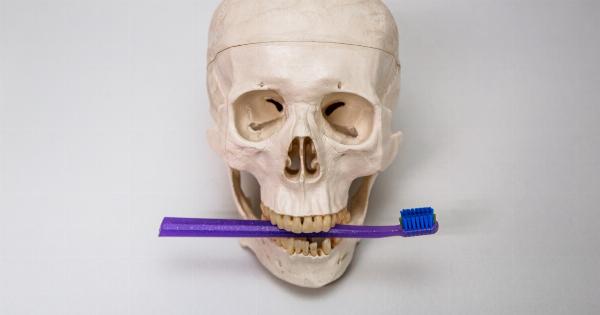Gynecomastia is a common condition that causes the enlargement of breast tissue in males. It can affect individuals of all ages, from infancy to adulthood, and can be caused by a variety of factors.
In this article, we will explore the causes, symptoms, and treatments for gynecomastia, as well as dispel some common myths about the condition.
What is Gynecomastia?
Gynecomastia is characterized by the swelling or enlargement of breast tissue in males. This can result in the appearance of breasts and can occur on one or both sides of the chest.
It is a relatively common condition, affecting up to 70% of adolescent boys and up to 50% of older men.
Causes of Gynecomastia
There are various causes of gynecomastia, including hormonal imbalances, medications, underlying medical conditions, and lifestyle factors. Here are some common factors that can contribute to the development of gynecomastia:.
Hormonal Imbalances
Gynecomastia can be caused by an imbalance between the hormones estrogen and testosterone in the body.
Estrogen is responsible for the development of female secondary sexual characteristics, including breast tissue growth, while testosterone is responsible for male secondary sexual characteristics. When there is an excess of estrogen or a decrease in testosterone levels, it can lead to the enlargement of breast tissue in males.
Medications
Some medications can cause gynecomastia as a side effect. These include certain types of medications used to treat prostate cancer, such as antiandrogens and GnRH analogs, as well as some antidepressants, antianxiety medications, and heart medications.
If you are taking any medications and notice breast enlargement, it is important to consult your healthcare provider.
Medical Conditions
Gynecomastia can be a symptom of certain medical conditions. For example, hormonal imbalances caused by conditions such as hypogonadism, hyperthyroidism, or liver or kidney disease can lead to the development of gynecomastia.
Additionally, tumors of the pituitary gland or testes can also cause hormonal imbalances and result in breast tissue enlargement.
Lifestyle Factors
Some lifestyle factors can contribute to the development of gynecomastia.
These include excessive alcohol consumption, illicit drug use (such as marijuana or anabolic steroids), and the use of certain herbal products or supplements that contain phytoestrogens (plant compounds that mimic the effects of estrogen in the body).
Symptoms of Gynecomastia
The main symptom of gynecomastia is the enlargement of breast tissue. This can vary from a small amount of tissue growth behind the nipple to more pronounced breast development. The affected area may be tender or sensitive to touch.
In some cases, there may be discharge from the nipple.
Diagnosis
If you are experiencing symptoms of gynecomastia, it is important to seek medical evaluation. Your healthcare provider will conduct a physical examination and may order additional tests to determine the underlying cause of the breast tissue enlargement.
These tests may include blood tests to measure hormone levels, imaging studies (such as mammography or ultrasound), or a biopsy of the breast tissue.
Treatment Options
The appropriate treatment for gynecomastia depends on the underlying cause and severity of the condition. In many cases, gynecomastia will resolve on its own without any specific treatment.
However, if the condition persists or causes significant physical or emotional distress, the following treatment options may be considered:.
Medication
In some cases, medication may be prescribed to treat gynecomastia. For example, selective estrogen receptor modulators (SERMs) such as Tamoxifen can help to reduce the size of breast tissue in males.
However, these medications may have side effects and should only be used under the supervision of a healthcare provider.
Surgery
In severe cases of gynecomastia or when other treatments have been ineffective, surgical intervention may be recommended.
The two main surgical options for gynecomastia are liposuction (removal of excess fat) and mastectomy (removal of breast glandular tissue). These procedures can help to restore a more masculine chest contour.
Living with Gynecomastia
Coping with gynecomastia can be challenging, particularly for adolescents who may experience body image issues and emotional distress. It is important to seek support from healthcare providers, family, and friends.
Talking openly about your feelings and concerns can help to alleviate some of the emotional burden associated with the condition.
Myths about Gynecomastia
There are several myths and misconceptions surrounding gynecomastia. Here are some common misconceptions and the facts that debunk them:.
Myth: Gynecomastia is caused by excess body fat
Fact: While being overweight can contribute to the appearance of enlarged breasts, gynecomastia is the result of breast tissue growth, not fat accumulation. It is possible to have gynecomastia even if you have a normal body weight.
Myth: Gynecomastia is a sign of breast cancer
Fact: Gynecomastia is a benign condition and is not associated with an increased risk of breast cancer.
However, it is still important to seek medical evaluation to rule out any underlying medical conditions or hormonal imbalances that may be causing the breast tissue enlargement.
Myth: Gynecomastia always requires treatment
Fact: In many cases, gynecomastia will resolve on its own without any specific treatment. However, if the condition persists or causes significant physical or emotional distress, treatment options may be explored.
Conclusion
Gynecomastia is a common condition that causes the enlargement of breast tissue in males. It can be caused by hormonal imbalances, medications, underlying medical conditions, and lifestyle factors.
While gynecomastia may resolve on its own, medical evaluation is important to determine the underlying cause and appropriate treatment options. Remember, seeking support from healthcare providers and loved ones is essential in coping with the emotional challenges associated with the condition.































